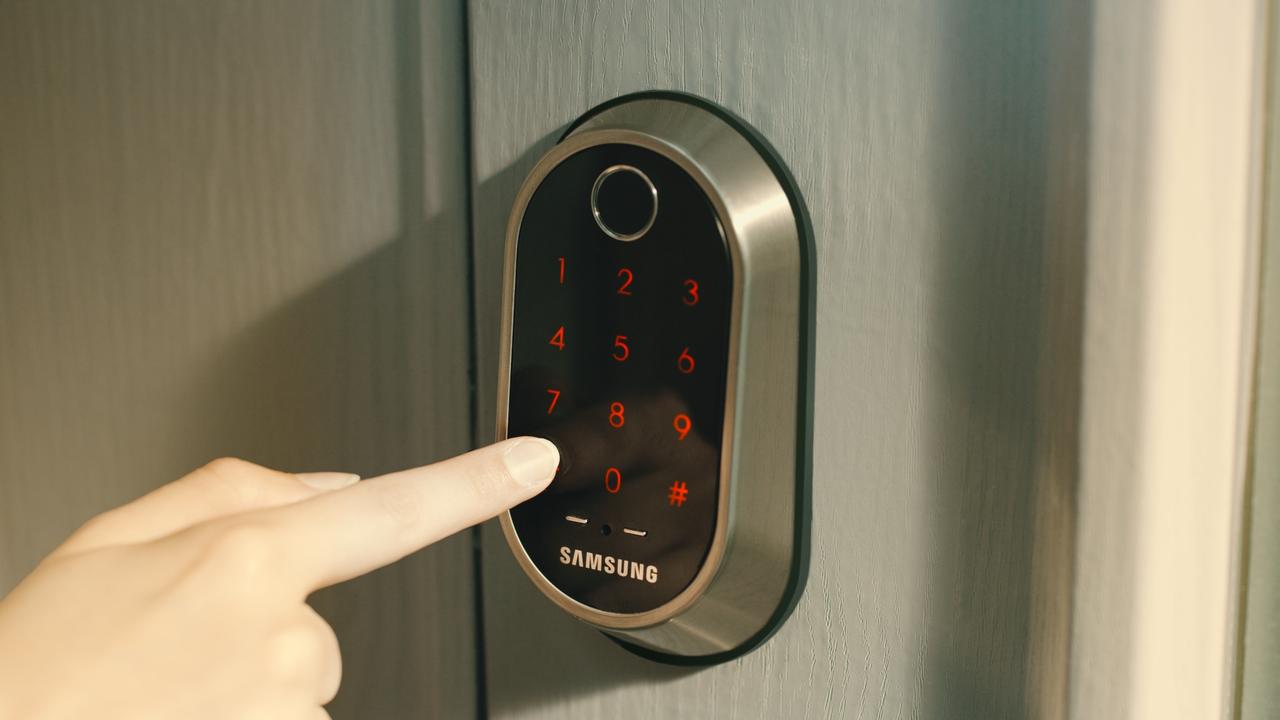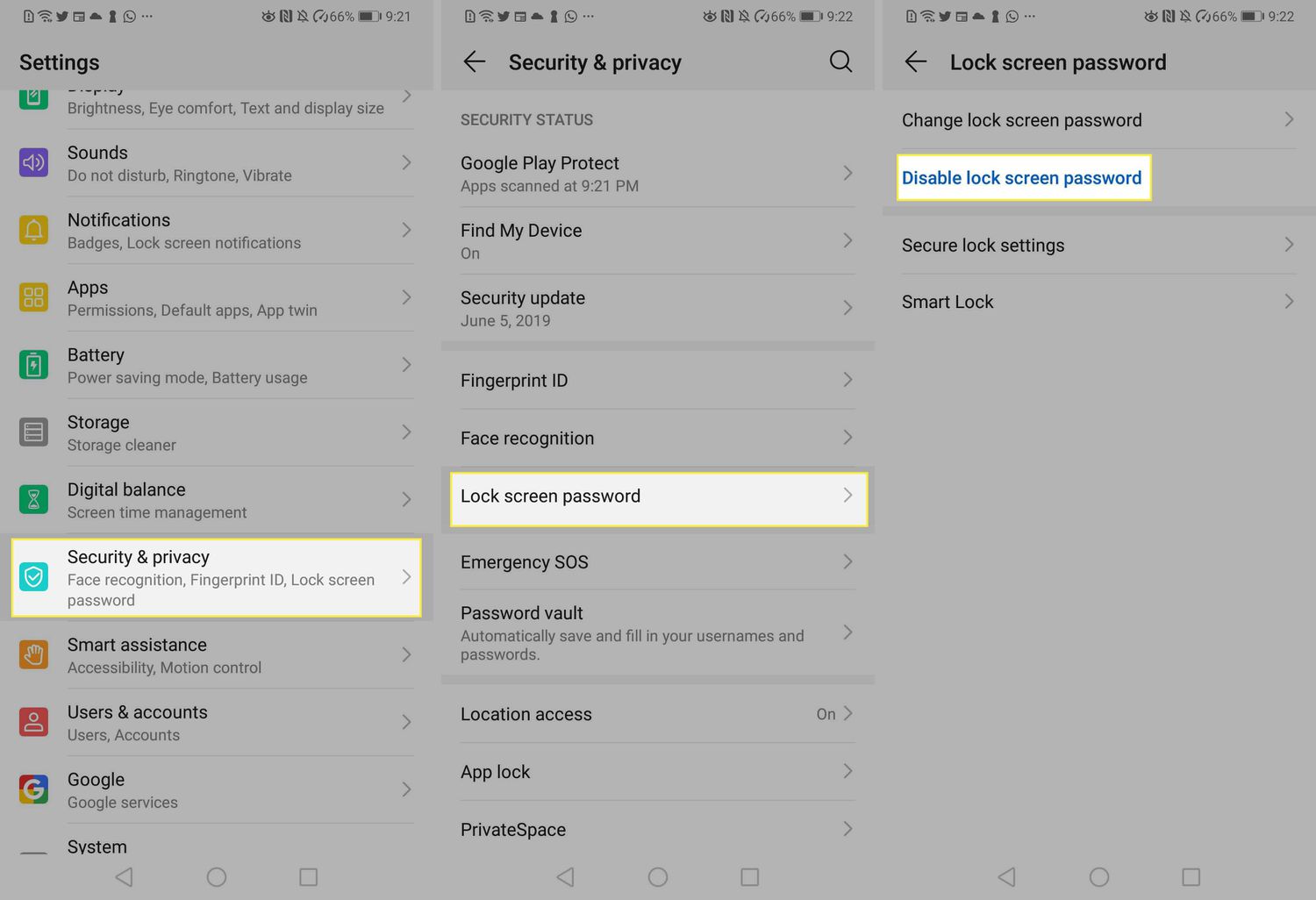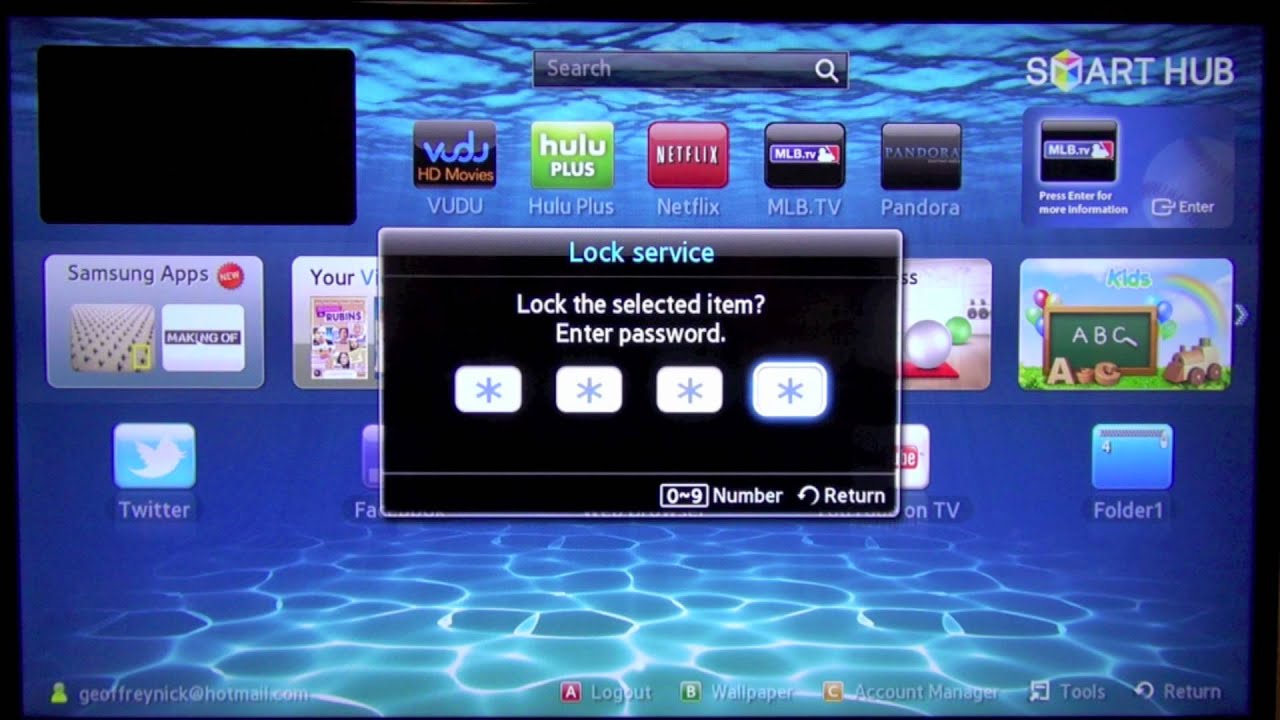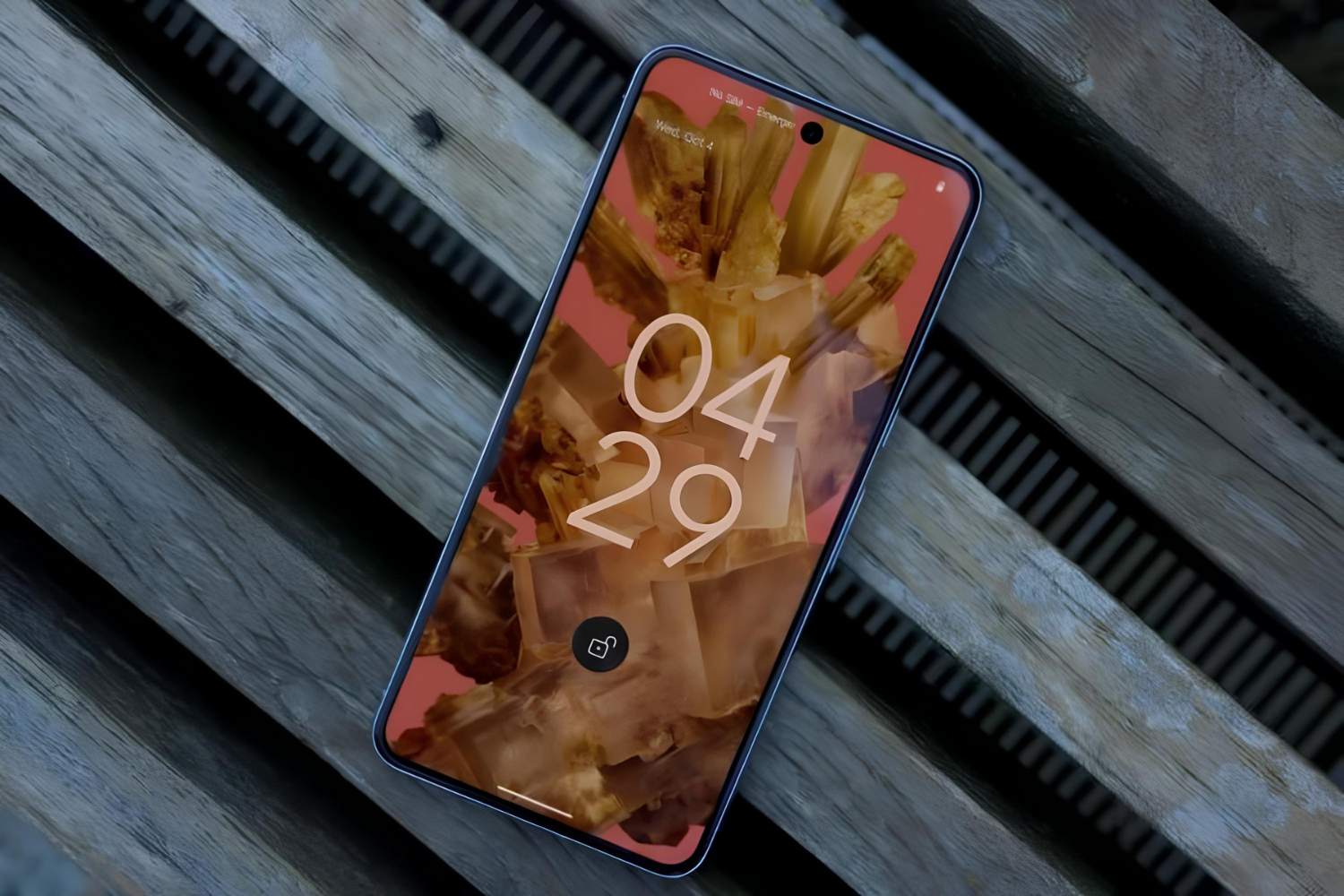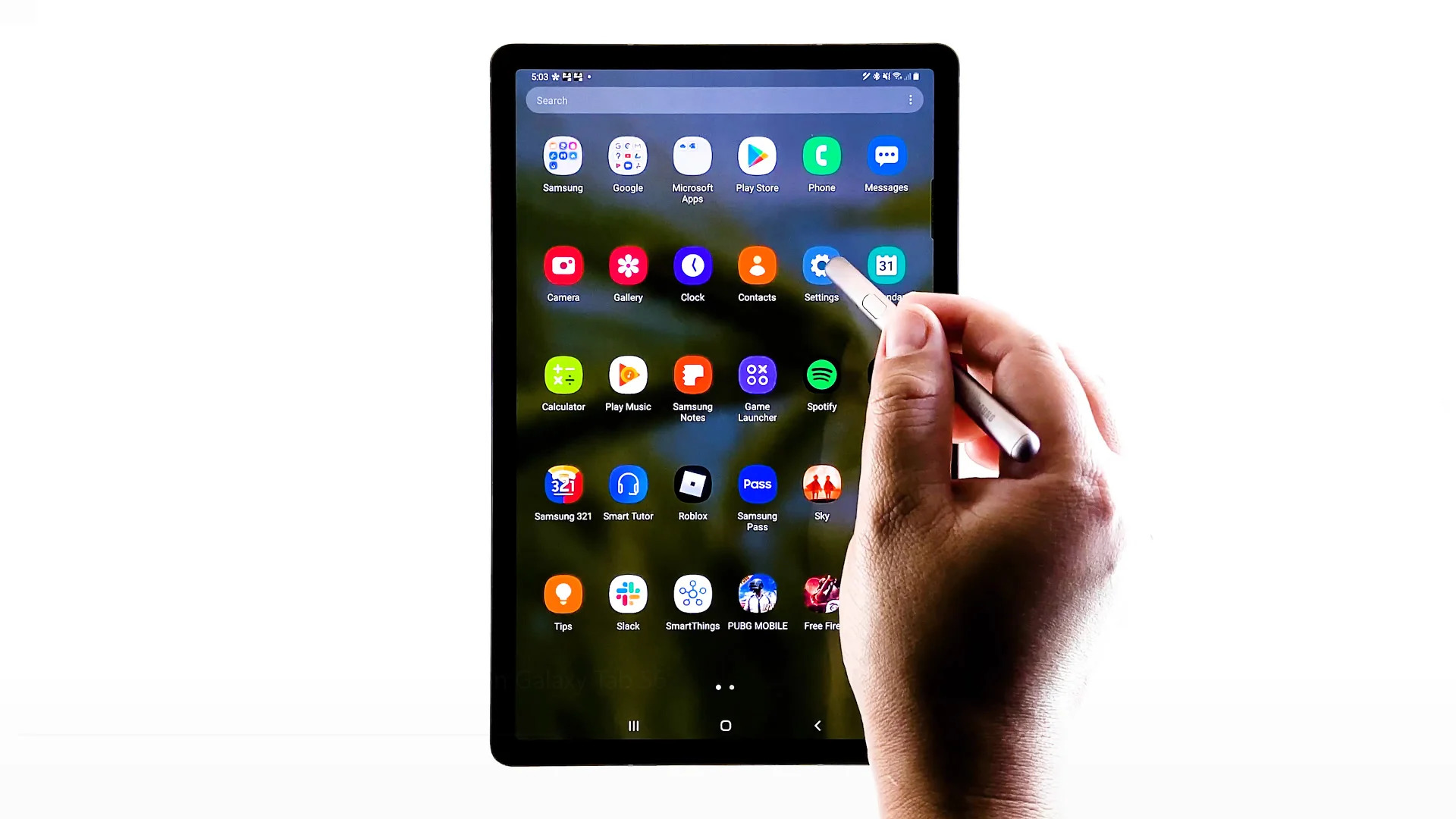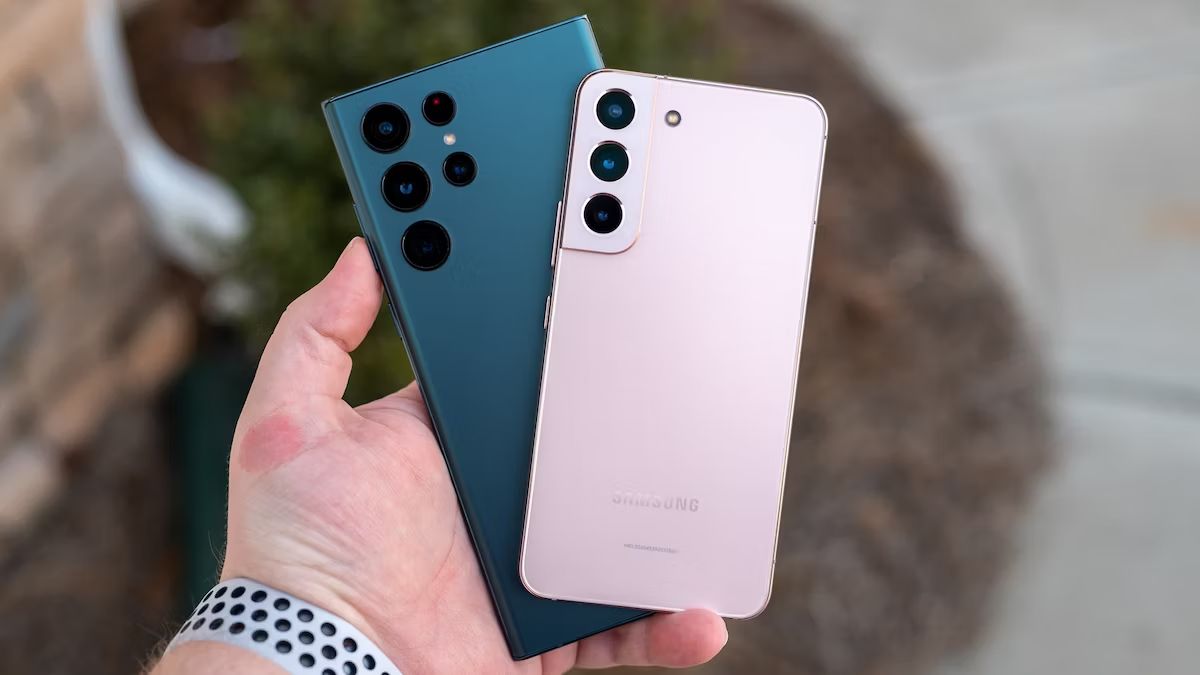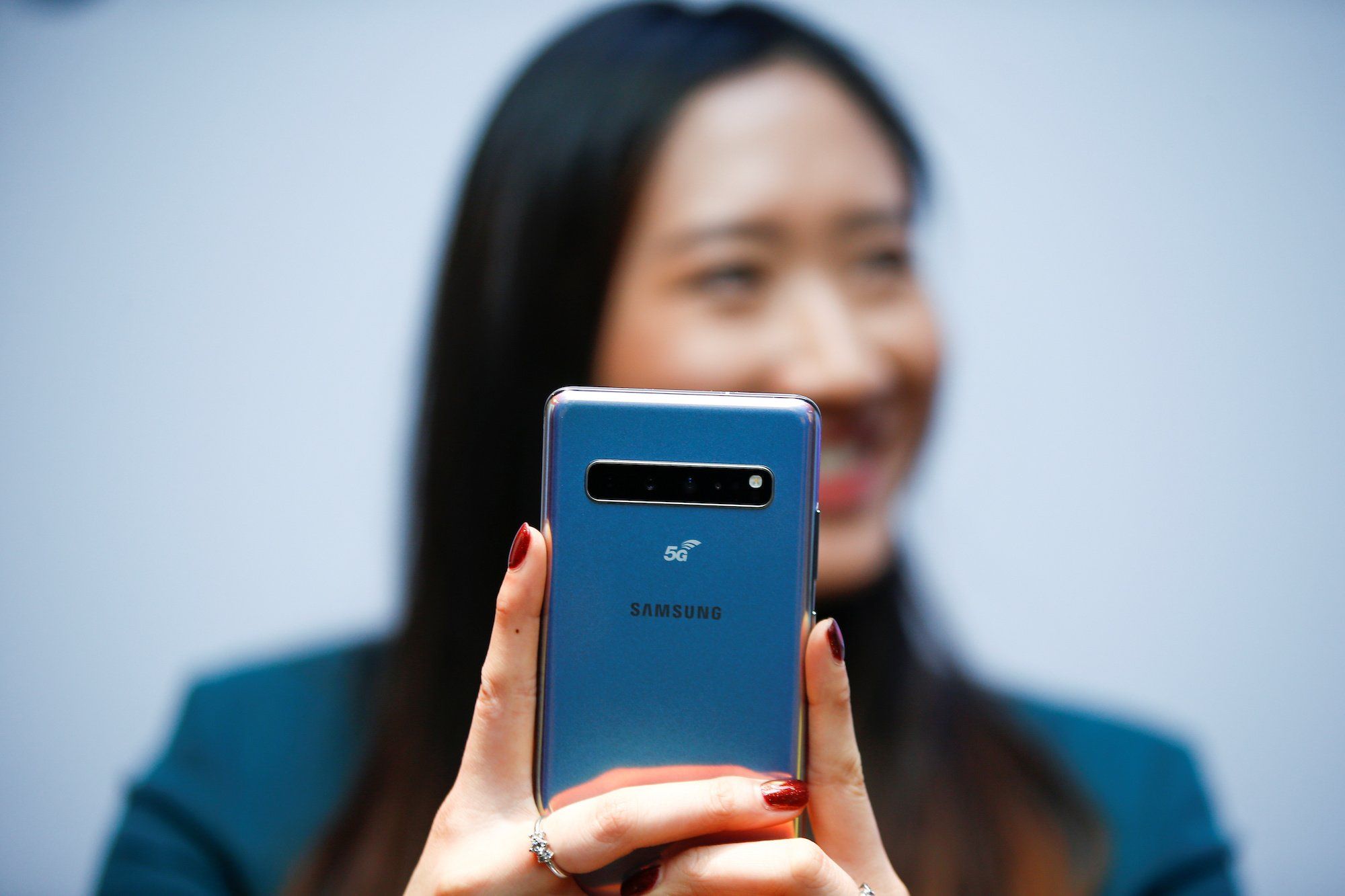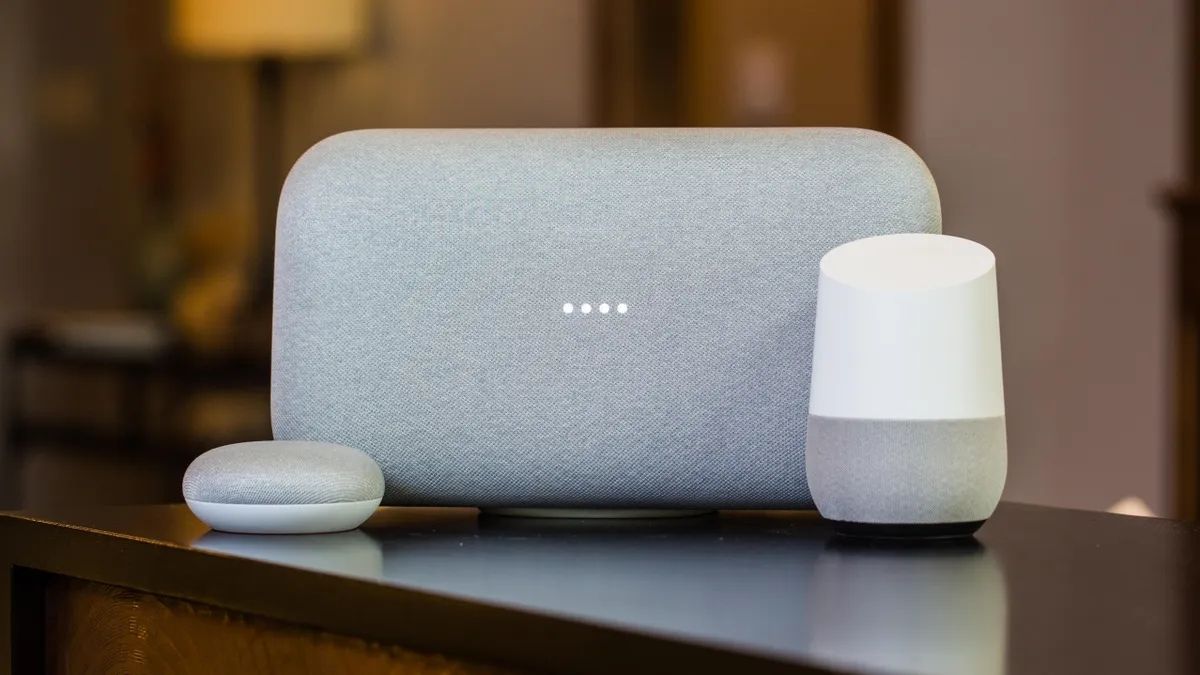Introduction
Smart Lock is a useful feature found on Samsung devices that allows you to bypass the lock screen under certain circumstances. It offers convenience by automatically unlocking your device when certain conditions are met, such as when it’s connected to a trusted device or location. However, there may be situations when you want to disable Smart Lock on your Samsung device.
In this guide, we will explore the various methods you can use to disable Smart Lock on your Samsung device. Whether you want to disable Smart Lock temporarily or permanently, we’ve got you covered.
Smart Lock is designed to enhance the user experience and provide an added layer of convenience. By automatically unlocking the device in trusted situations, users can save time and effort, especially when they are in a hurry. However, there are several reasons why you might want to disable Smart Lock on your Samsung device.
One of the main reasons to disable Smart Lock is privacy and security concerns. Although Smart Lock can be convenient, it also poses a risk if your device falls into the wrong hands. Disabling Smart Lock ensures that your device remains locked, protecting your personal information and sensitive data from unauthorized access.
Another reason to disable Smart Lock is to troubleshoot any issues or glitches related to the feature itself. Sometimes, Smart Lock may not work as intended, causing frustration and inconveniences. By disabling and re-enabling Smart Lock, you can often resolve any issues that may be affecting its functionality.
Additionally, some users may simply prefer the traditional method of unlocking their device with a PIN, password, or pattern. While Smart Lock offers convenience, it may not be suitable for everyone’s preferences or needs. Disabling Smart Lock allows you to revert back to the standard lock screen security methods.
Now that you understand the reasons for disabling Smart Lock on your Samsung device, let’s explore the different methods you can use to achieve this. Whether you prefer accessing the device settings or using a dedicated app, we’ll guide you through the steps to disable Smart Lock.
What is Smart Lock on Samsung?
Smart Lock is a feature available on Samsung devices that provides a more seamless and convenient way to unlock your phone or tablet. It integrates with various trusted elements, such as your location, Bluetooth devices, and voice recognition, to automatically unlock the device when they are in proximity or meet specific conditions.
When Smart Lock is enabled, you can bypass the usual lock screen security measures, such as PIN, password, or pattern, under certain circumstances. This eliminates the need to manually unlock your device every time you want to use it, saving you time and effort.
Let’s take a closer look at the different components of Smart Lock:
- Trusted Devices: You can set up Smart Lock to recognize specific Bluetooth devices, such as your smartwatch or car stereo, as trusted devices. When your Samsung device is connected to one of these trusted devices, it automatically unlocks without the need for a PIN or other security measures.
- Trusted Places: Smart Lock allows you to designate certain locations, such as your home or office, as trusted places. When your device detects that it is within the range of these trusted places, it automatically unlocks. This means you can simply pick up your device at these locations and start using it without any additional steps.
- Trusted Face: Smart Lock utilizes facial recognition technology to unlock your Samsung device. By registering your face as a trusted face, your device can quickly and securely recognize you and unlock the screen when it detects your face in front of the camera. This option provides a hands-free and efficient way to unlock your device.
- On-body Detection: With on-body detection, your Samsung device remains unlocked as long as it remains on your body, such as in your pocket or hand. The device uses the built-in sensors to detect motion and proximity, ensuring that it automatically locks when you set it down or when it’s no longer in contact with your body.
Smart Lock offers a convenient and customizable way to handle the lock screen security on your Samsung device. By integrating with trusted devices, locations, facial recognition, and on-body detection, it streamlines the unlocking process and adapts to your lifestyle.
Now that you have a clear understanding of what Smart Lock is and how it works, let’s explore why you may want to disable this feature and how to do it on your Samsung device.
Reasons to Disable Smart Lock
While Smart Lock on Samsung devices offers convenience and streamlined access to your device, there are several reasons why you might want to disable this feature:
- Privacy and Security: One of the main reasons users choose to disable Smart Lock is to prioritize their privacy and security. By disabling the feature, you ensure that your device remains locked at all times, providing an extra layer of protection for your personal information and sensitive data. This is particularly important if your device is lost or stolen, as disabling Smart Lock prevents unauthorized access to your device and its contents.
- Unreliable Functionality: While Smart Lock aims to provide a seamless unlocking experience, there may be instances where it fails to function as expected. Some users have reported issues with Smart Lock not detecting trusted devices or locations accurately, leading to a frustrating user experience. Disabling Smart Lock and relying on traditional lock screen security methods can help alleviate these reliability concerns.
- Personal Preference: Smart Lock may not be everyone’s preferred method of unlocking their Samsung device. Some users simply prefer the familiarity and comfort of using a PIN, password, or pattern to unlock their device. Disabling Smart Lock allows you to revert back to these traditional security measures, giving you a sense of control over the unlocking process.
- Battery Life: Enabling Smart Lock features such as Trusted Places or On-body Detection may have a slight impact on your device’s battery life. While the impact is generally minimal, some users may prefer to disable Smart Lock to maximize their device’s battery performance.
- Troubleshooting Purposes: In some cases, disabling and re-enabling Smart Lock can help troubleshoot any issues or glitches that may be affecting its functionality. If you’re experiencing problems with Smart Lock, disabling it temporarily and then re-enabling it may resolve the issue and restore proper functioning.
By considering these reasons, you can make an informed decision about whether or not to disable Smart Lock on your Samsung device. Next, we will explore the different methods you can use to disable Smart Lock, allowing you to regain control over your device’s lock screen security.
How to Disable Smart Lock on Samsung
Disabling Smart Lock on your Samsung device is a straightforward process. There are multiple methods you can use, depending on your device model and personal preference. Here are three common methods to disable Smart Lock:
-
- Method 1: Using Settings
The most direct way to disable Smart Lock is through the device settings. Here’s how:
-
-
- Open the Settings app on your Samsung device.
- Scroll down and tap on “Biometrics and Security” or “Lock Screen.”
- Select “Smart Lock” or “Smart Lock and Security.”
- Enter your PIN, password, or pattern to authenticate.
- Locate the Smart Lock feature and tap on it.
- Toggle off the specific Smart Lock options, such as Trusted Devices, Trusted Places, or Trusted Face.
- Method 2: Using Smart Lock App
-
If you prefer using a dedicated app to manage Smart Lock settings, you can utilize the Smart Lock app available on your Samsung device. Follow these steps:
-
-
- Open the Smart Lock app on your Samsung device.
- Authenticate with your PIN, password, or pattern.
- Within the app, locate and disable the specific Smart Lock features you want to turn off.
- Method 3: Using Google Account
-
If you have synced your Samsung device with your Google account, you can disable Smart Lock through your Google account settings. Here’s how:
-
- Visit the Google Account website on a computer or another device.
- Sign in to your Google account associated with your Samsung device.
- Navigate to the “Security” or “Sign-in & security” settings.
- Look for the “Smart Lock for Android” or “Trusted devices” section.
- Disable the Smart Lock options for your Samsung device.
After following one of these methods, Smart Lock will be disabled on your Samsung device. Remember that disabling Smart Lock will revert your device back to using the traditional lock screen security methods, such as PIN, password, or pattern.
If you decide to enable Smart Lock again in the future, simply follow the same steps and toggle the related options back on. By having control over Smart Lock, you can customize your device’s lock screen security to suit your needs and preferences.
Method 1: Using Settings
Disabling Smart Lock on your Samsung device can be done through the device settings. This method allows you to directly access the Smart Lock settings and toggle off specific options. Here’s how you can disable Smart Lock using the Settings app:
- Open the Settings app on your Samsung device. You can usually find the Settings app in your app drawer or by swiping down from the top of the screen and tapping on the gear icon.
- Scroll down and find the “Biometrics and Security” or “Lock Screen” option. The name may vary depending on your Samsung device model and software version.
- Tap on “Biometrics and Security” or “Lock Screen” to access the related settings.
- Within the settings, look for the “Smart Lock” or “Smart Lock and Security” option and tap on it. You may need to authenticate with your PIN, password, or pattern to proceed.
- Once you’re in the Smart Lock settings, you will see several options that you can disable. These options may include Trusted Devices, Trusted Places, Trusted Voice, or Trusted Face, depending on your device and software version.
- To disable a specific Smart Lock option, tap on it and toggle off the switch or follow the prompt to remove the existing trusted device, location, voice, or face.
- You can repeat the previous step for each Smart Lock option that you want to turn off.
After disabling the desired Smart Lock options, your Samsung device will revert back to using the traditional lock screen security methods, such as PIN, password, or pattern. Remember that the steps and options may vary slightly depending on your Samsung device model, software version, and any customizations made by your mobile carrier.
Disabling Smart Lock through the device settings gives you full control over the feature and allows you to customize your device’s lock screen security to suit your preferences.
Method 2: Using Smart Lock App
Another method to disable Smart Lock on your Samsung device is by using the Smart Lock app. This dedicated app provides a convenient way to manage and control Smart Lock settings. Here’s how you can disable Smart Lock using the Smart Lock app:
- Open the Smart Lock app on your Samsung device. The app icon may be located in your app drawer or on your homescreen. If you can’t find the app, you can try searching for it in the app drawer or in the Settings app.
- Once you have opened the Smart Lock app, you may need to authenticate by entering your PIN, password, or pattern.
- Within the app, you will find various Smart Lock options, such as Trusted Devices, Trusted Places, Trusted Voice, or Trusted Face.
- To disable a specific Smart Lock option, tap on it and toggle off the switch or follow the prompt to remove the existing trusted device, location, voice, or face.
- You can repeat the previous step for each Smart Lock option that you want to turn off.
The Smart Lock app allows you to have quick access to the Smart Lock settings and makes it easier to manage the different options. Note that the availability of the Smart Lock app may vary depending on your Samsung device model, software version, and any customizations made by your mobile carrier.
By using the Smart Lock app, you have more flexibility in managing Smart Lock settings on your Samsung device. Whether you want to disable a specific option temporarily or make permanent changes, the Smart Lock app provides a convenient interface to control and customize your device’s lock screen security.
Method 3: Using Google Account
If you have synced your Samsung device with your Google account, you can disable Smart Lock through your Google account settings. This method allows you to manage Smart Lock settings remotely and independently of your device. Here’s how you can disable Smart Lock using your Google account:
- Visit the Google Account website on a computer or another device.
- Sign in to your Google account that is associated with your Samsung device.
- Navigate to the “Security” or “Sign-in & security” settings. You can usually find these options in the account settings menu.
- Look for the “Smart Lock for Android” or “Trusted devices” section. This is where you can manage Smart Lock settings for your synced devices.
- Within the Smart Lock for Android or Trusted devices section, you will find a list of the devices synced with your Google account. Locate your Samsung device from the list.
- To disable Smart Lock for your Samsung device, click on the settings icon or the corresponding option next to the device name.
- Follow the prompts or toggle off the Smart Lock options to disable the feature for your Samsung device.
By accessing your Google account settings, you can disable Smart Lock for your Samsung device remotely and make changes independently of the device itself. This is particularly useful if you don’t have immediate access to your device or prefer managing settings through your Google account.
Remember that disabling Smart Lock through your Google account will disable the feature specifically for the synced device. This means that if you have multiple devices synced with your Google account, disabling Smart Lock for one device will not affect the settings for other devices.
Using your Google account to disable Smart Lock offers versatility and convenience in managing Smart Lock settings for your Samsung device from anywhere you have access to your Google account.
Common Issues and Troubleshooting
While Smart Lock on Samsung devices is designed to provide a seamless unlocking experience, there may be instances where you encounter issues or glitches. Here are some common issues that users may face and troubleshooting tips to overcome them:
- Smart Lock not working: If you find that Smart Lock is not working as expected, try the following troubleshooting steps:
– Ensure that you have set up and configured Smart Lock correctly.
– Restart your Samsung device to refresh system settings.
– Update your device’s software to the latest version, as updates may include bug fixes.
– Clear the cache of the Smart Lock app, if applicable.
– If the issue persists, consider disabling and re-enabling Smart Lock, or contact Samsung support for further assistance. - Inaccurate Trusted Places: If Smart Lock’s Trusted Places feature is not recognizing your designated location accurately, try the following:
– Ensure that you have enabled location services on your device and that it has a strong GPS signal.
– Double-check the address and accuracy of the designated Trusted Place.
– Try deleting and re-adding the Trusted Place.
– If the issue persists, consider using an alternative method like a trusted device or face recognition for unlocking your device. - Unresponsive Trusted Devices: If Smart Lock is not detecting your trusted Bluetooth device, try the following:
– Ensure that the Bluetooth device is turned on and in close proximity to your Samsung device. Sometimes, simply turning Bluetooth off and on again can help establish the connection.
– Delete and re-pair the Bluetooth device with your Samsung device.
– Check for any software updates for both your Samsung device and the trusted Bluetooth device.
– If the issue persists, try using an alternative trusted device or consider disabling the Bluetooth option altogether. - Persistent Battery Drain: If you experience a significant decrease in battery life after enabling Smart Lock, consider the following:
– Disable unnecessary Smart Lock options that may be using additional battery power, such as On-body Detection.
– Check for any running apps or processes that may be draining your battery and close them if necessary.
– Adjust your device’s power management settings to optimize battery performance.
– If the battery drain issue persists, consider disabling Smart Lock temporarily or contact Samsung support for further assistance.
If these troubleshooting steps do not resolve the issue, it’s recommended to reach out to Samsung’s customer support or visit an authorized service center to get professional assistance. Their experts can help diagnose the problem and provide solutions specific to your device and situation.
Conclusion
Smart Lock on Samsung devices offers a convenient way to unlock your device by leveraging trusted elements such as locations, Bluetooth devices, face recognition, and more. However, there may be reasons to disable Smart Lock, including privacy concerns, unreliable functionality, personal preference, or troubleshooting purposes. Fortunately, disabling Smart Lock is a straightforward process that can be done through the device settings, using the Smart Lock app, or managing the settings through your Google account.
By following the methods outlined in this guide, you can easily disable Smart Lock on your Samsung device and revert back to the traditional lock screen security methods. Remember to consider the factors that influenced your decision to disable Smart Lock, such as privacy and security concerns or personal preferences.
If you encounter any issues with Smart Lock, such as it not working properly or inaccurate recognition of trusted devices or locations, try troubleshooting steps such as restarting your device, updating software, or clearing app caches. If the problems persist, reach out to Samsung support or visit an authorized service center for further assistance.
Overall, the ability to control and customize Smart Lock settings provides flexibility and choice when it comes to securing your Samsung device. By understanding how Smart Lock works and the different methods to disable it, you can ensure that your device’s lock screen security meets your specific needs and preferences.







